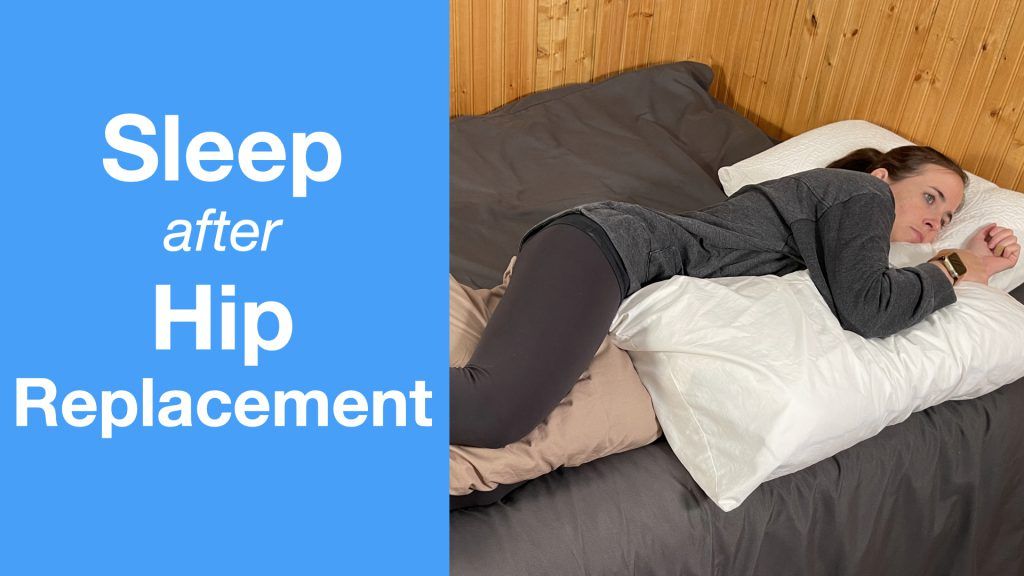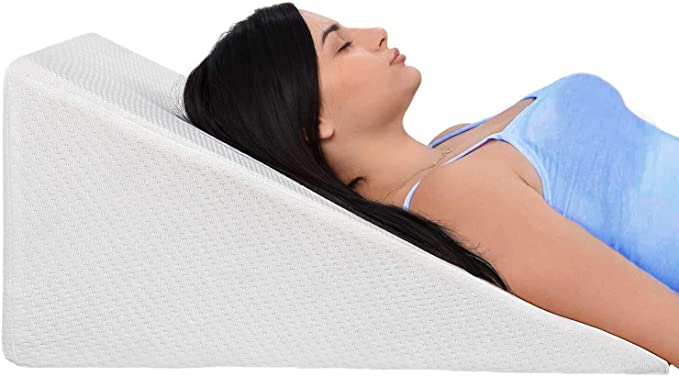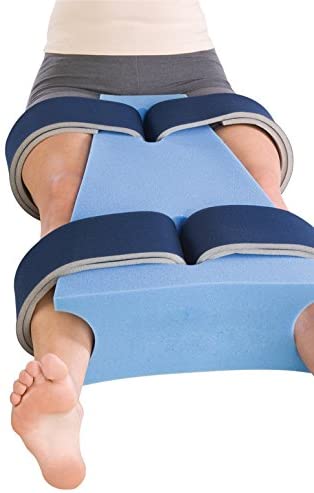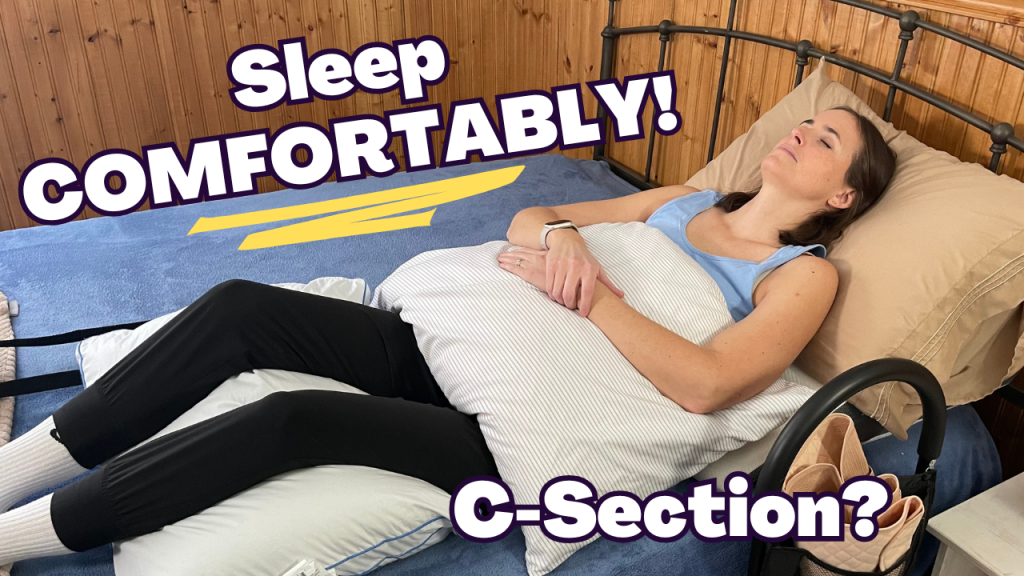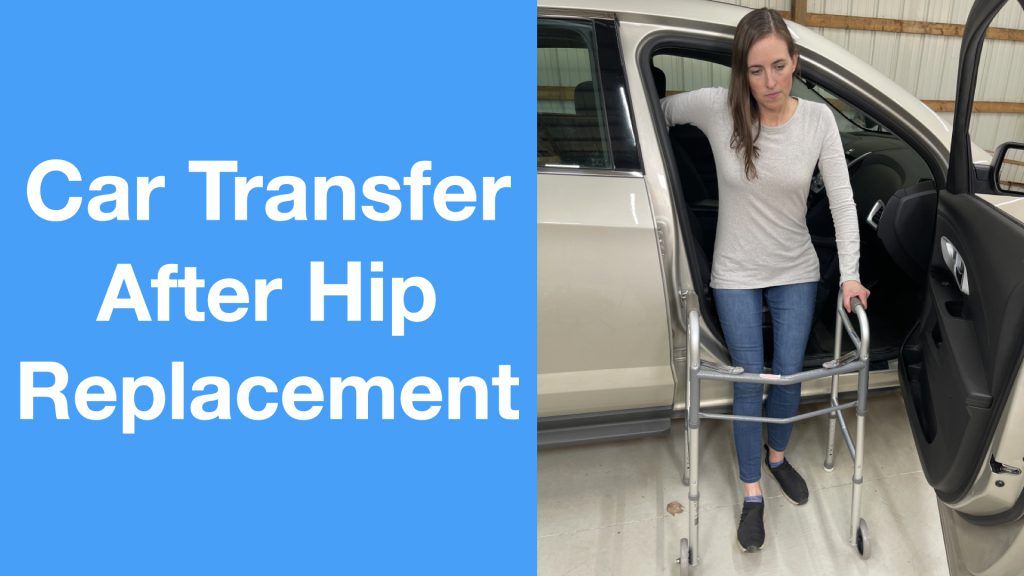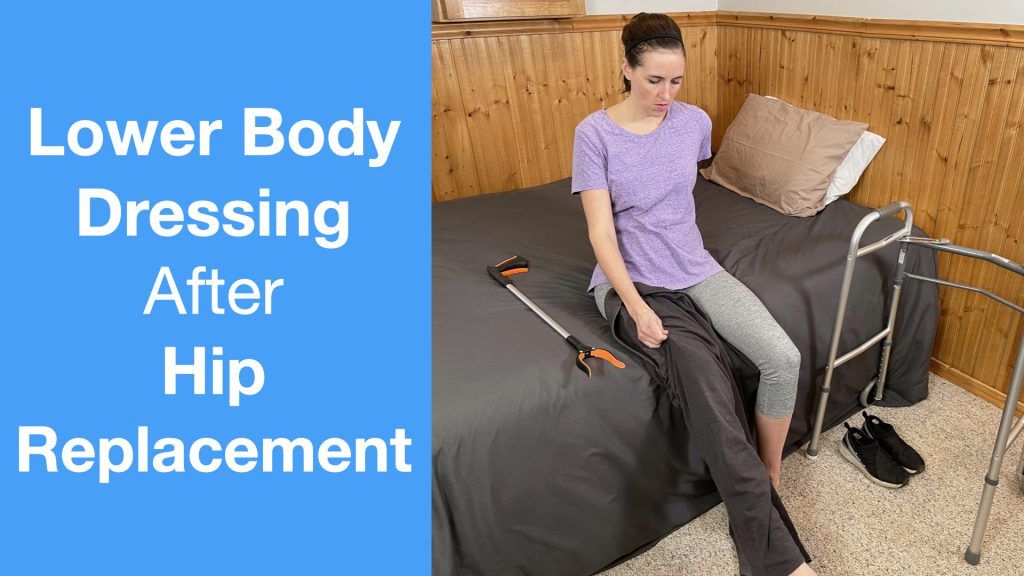Are you struggling to sleep following a hip replacement?
Or are you preparing for a hip replacement (maybe double) and want to know some tips on how to sleep comfortably?
You are not alone. Many people struggle to sleep after a hip replacement because of the pain or discomfort.
But fear not, I have years of experience helping people with sleeping after a hip replacement.
This post will provide detailed instructions on positioning safely in bed for sleep following hip replacement surgery. It will also provide recommendations for equipment or supplies needed and suggest techniques for remaining in good alignment throughout the healing process, protecting yourself from future injury.
Overview
- Equipment for Sleeping After Hip Surgery
- What is the Safest Sleep Position After Hip Replacement?
- How to Sleep on Your Back After Hip Replacement
- Can I Sleep on My Side After Hip Replacement?
- Using the Wedge
First, this post is only going to go over sleep once you are IN the bed. If you want to learn how to get in and out of bed safely or are having trouble getting in and out of bed safely following a hip replacement, I have a separate post all about how to get in and out bed safely following a hip replacement.
Please note: Before we begin, you need to make sure you follow all the instructions and warnings provided by the manufacturer. The steps below are only to provide guidance with installing or assembling equipment, but you should always follow the warnings and instructions provided by the manufacturer and always speak with your medical team before adding new equipment to your routine.
Equipment for Sleeping After Hip Replacement
Below is a list of equipment that I recommend to help with sleeping after hip surgery. We’ll go over why I recommend them in the post.
Leg Lifters
Wedge
Hip Abductor Pillow
First, let’s discuss a common question about sleeping after hip replacement.
What is the Safest Sleep Position After Hip Replacement?
Sleeping on your back is the safest sleep position after hip surgery. The key to sleeping on you back is that it prevents further injury is to keep your leg straight.
The reason for sleeping on your back following a hip replacement surgery is to prevent your leg from flopping left or right. The flopping of your leg left or right could cause your hip to rotate and pop out of the socket, which would cause further pain or possibly injury.
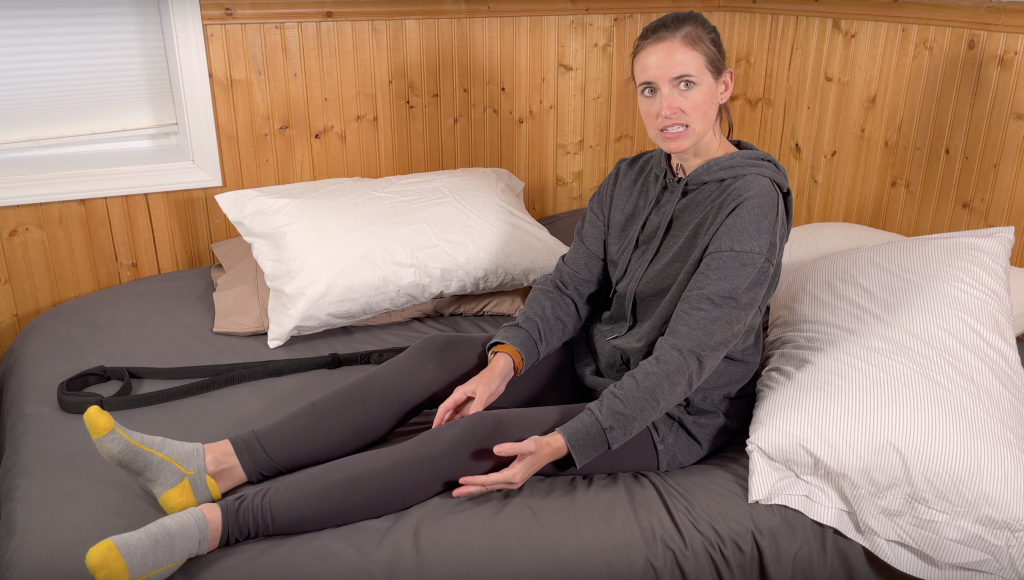
Therefore, keeping your leg as straight as possible to prevent your hip from popping out of the socket is the ideal sleep position. Sleeping on your back after hip replacement surgery is the safest way to accomplish this strategy.
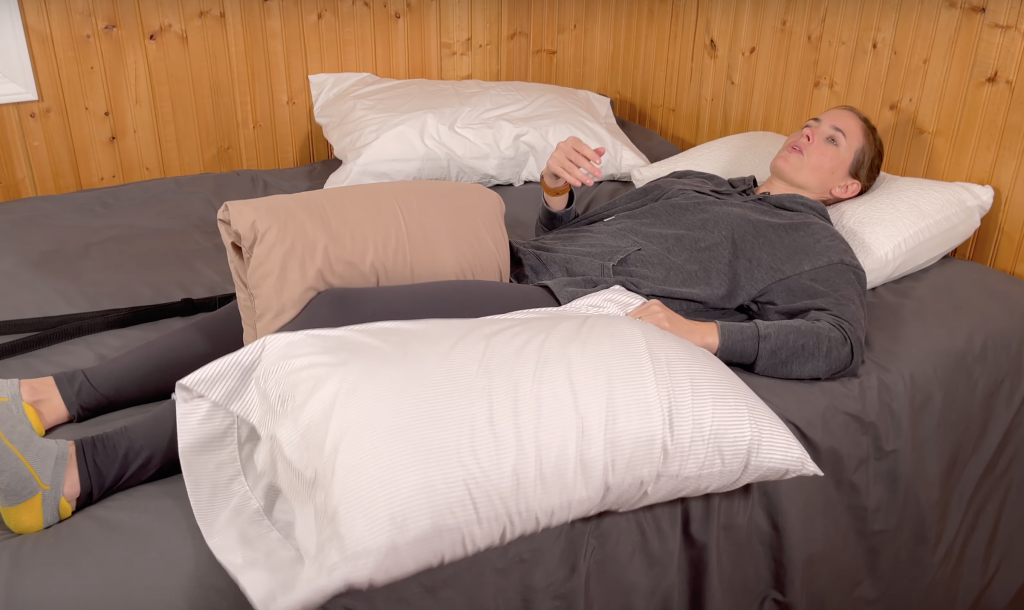
Now, let’s talk about how to actually accomplish this.
How to Sleep on Your Back Following a Hip Replacement
Before you begin, you will want to have at least three pillows available and preferably, already on the bed. One will be used at the head of your bed, but the other two will used to position your legs and body. I recommend at least one flat pillow for positioning for your body. More on this later.
To begin, you’ll start with the proper technique of getting into bed. Pay special attention to the angle of your hip, and use leg lifters if necessary.
Once in your bed, position a pillow at the head of your bed in a normal, comfortable position. The other two pillows will be used to prevent the injured leg from rotating.
Position the flat pillow outside the knee area of the injured hip.
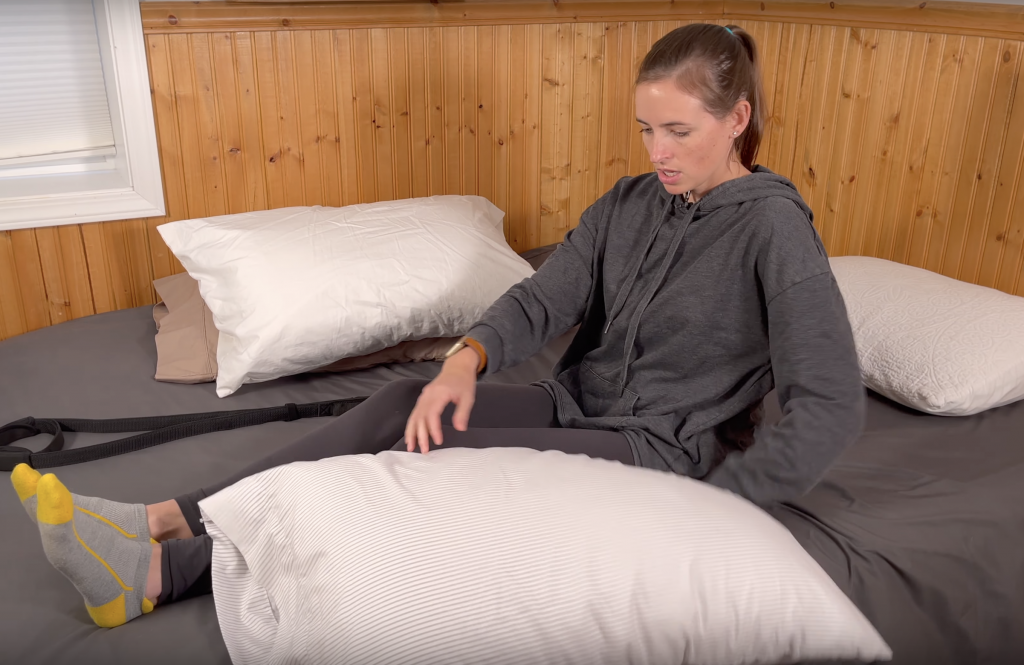
Take the thin pillow and fold it in half between your knees.
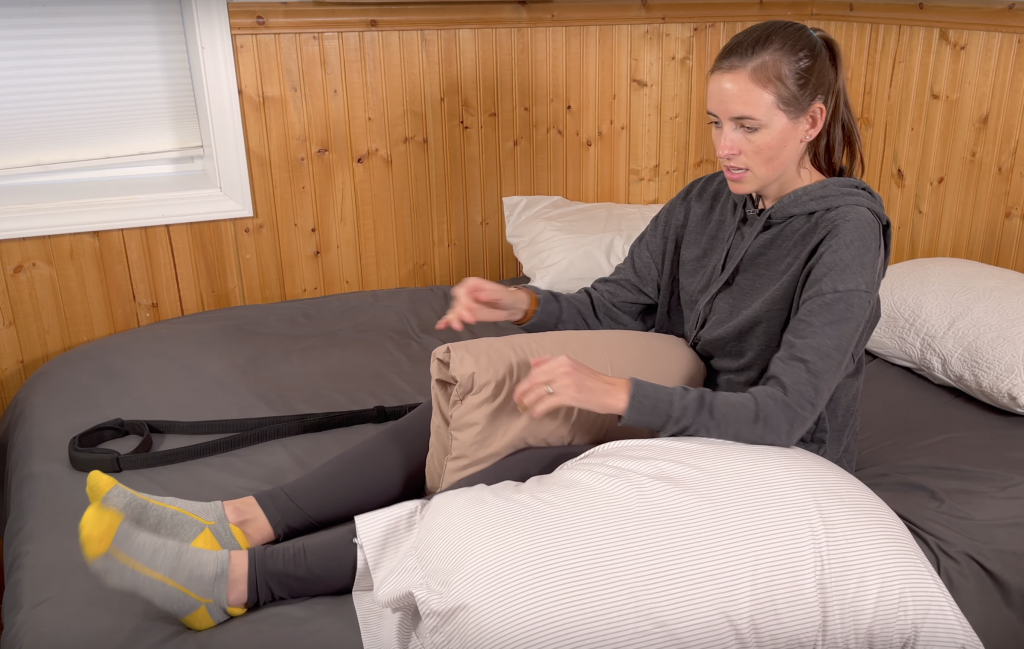
These two pillows will keep the knee and ankle from rotating, which can cause stress on the hip socket.

Can I Sleep on My Side After Hip Replacement?
Yes! Many people find side sleeping more comfortable. Sleeping on your side after hip surgery is possible, but proper positioning is vital. Side-sleeping raises the risk of dislocation than sleeping on your back.
Before we talk about how to position yourself for side sleeping, again you need to have several pillows available in your bed. In this position, you may need several because you will want a set of pillows to go between your legs the entire length of your legs, which may require more than one.
To begin, while sitting in bed, you’ll place pillows between your legs the entire length from hip to ankles.
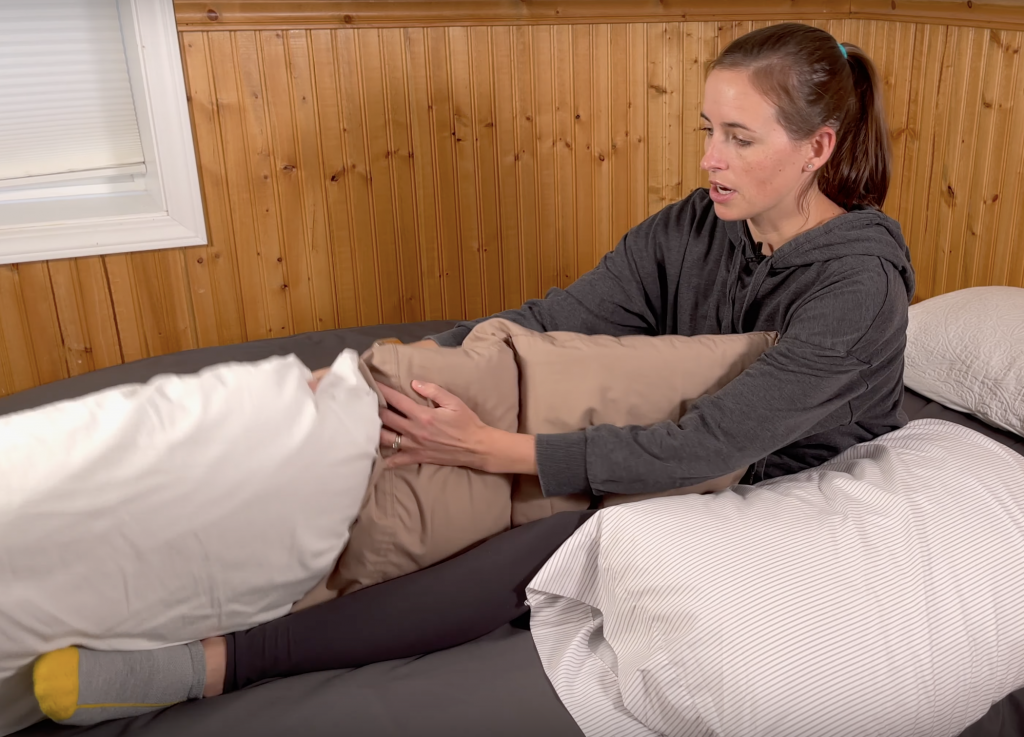
These pillows will help prevent the surgical hip from slipping the non-surgically repaired leg forward or backward. That movement of the surgically repaired leg can easily cause a dislocation.
If you are at high risk for dislocation, which your surgeon should tell you if you’re exceptionally high risk, a hip abductor pillow may be required. A hip abductor pillow is specially designed to prevent your legs from crossing over one another while you sleep after hip replacement.
With the pillows (or hip abductor pillow) between your legs, rotate your body slowly towards the non-repaired leg, so the non-repaired leg is down and the repaired leg is on top. Be sure to keep hips, knees, and ankles rotating at the same time. Do not sleep with the repaired leg on the bottom. That position will put too much pressure on the repaired hip.
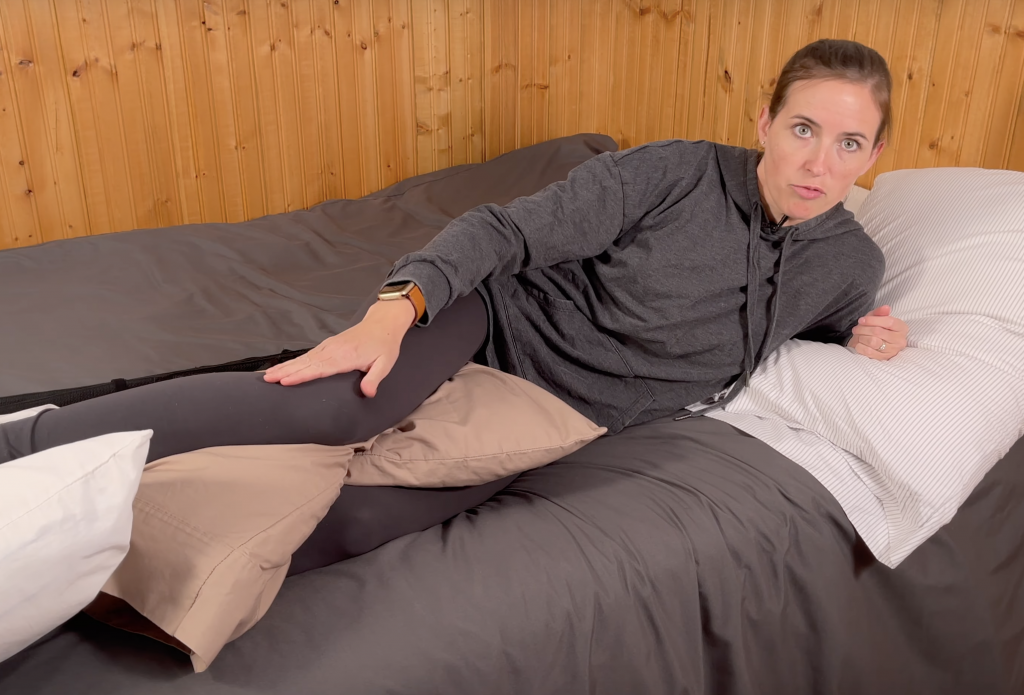
Once you’ve rolled safely to the side, I recommend putting another pillow behind you. This pillow will keep you from rolling onto your back while sleeping. You may need assistance from another person to place this pillow.
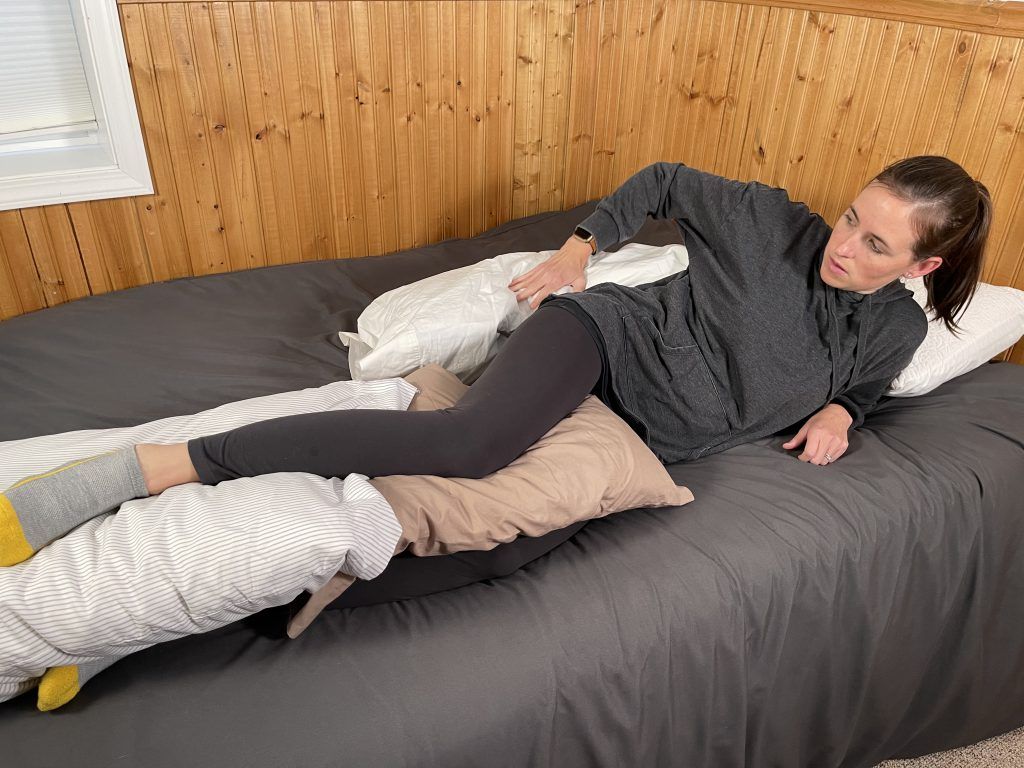
This combination of pillows between your legs (either the hip abductor pillow, or a set of pillows from hip to ankles) will keep your hip in a safe, healthy position for rest.
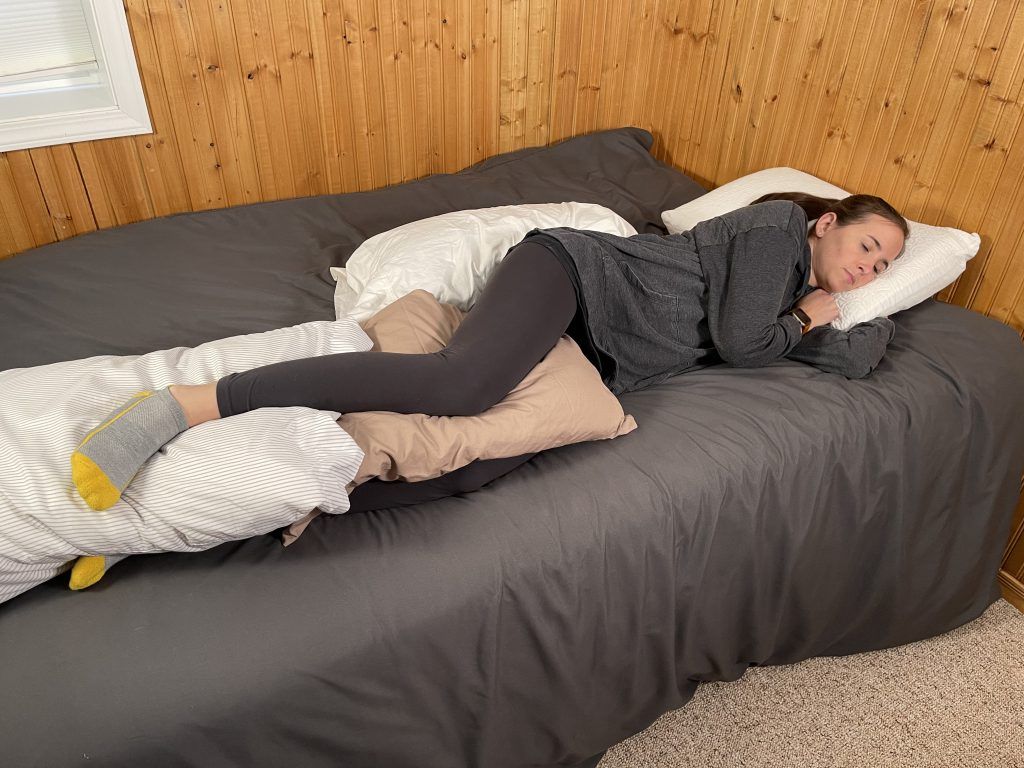
Using The Wedge To Help Swelling After Hip Replacement
Lastly, I recommend a wedge to help manage swelling and for resting after hip replacement. The wedge is meant to help elevate your repaired leg which is essential to helping manage swelling.
The best way to utilize the wedge is to place the wedge at the end of the bed and then, using a leg lifter to ensure you don’t break your hip precaution, placing your leg on top of the wedge. The 45 degree angle of the wedge will help elevate the repaired leg this way.
If laying your leg directly on the wedge is uncomfortable for rest, another thin pillow can be added to the top of the wedge for extra comfort if necessary. However, remember that the combination of wedge and the pillow cannot cause the angle of you leg to your hip to be greater than 90 degrees.
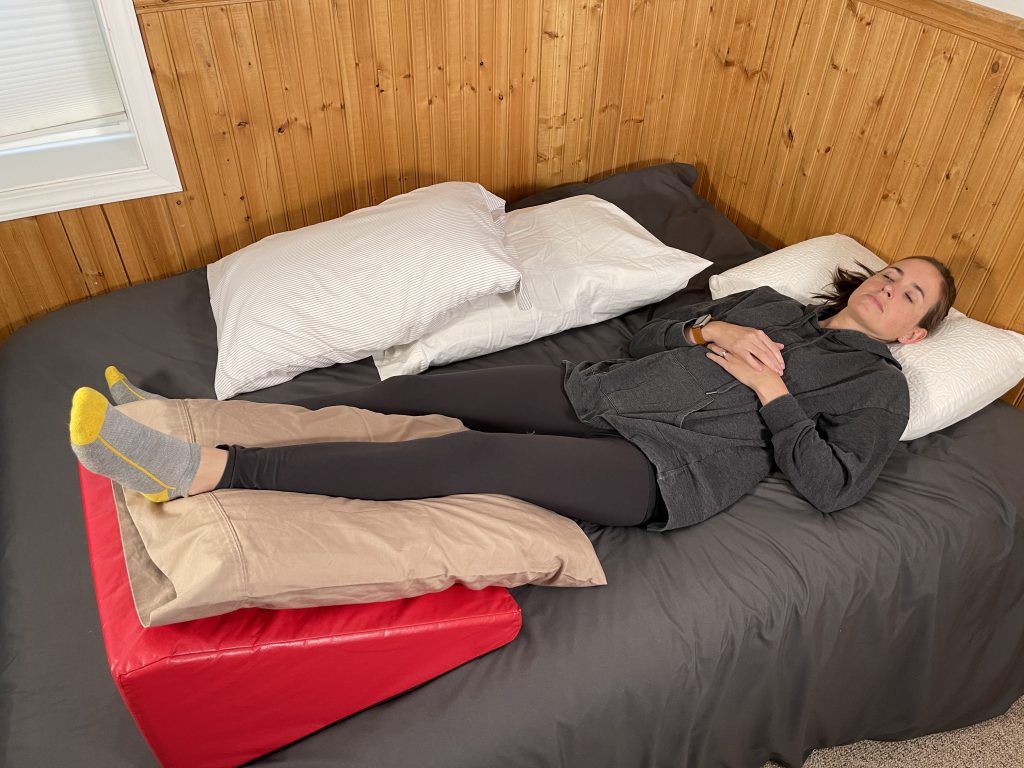
In addition, remember that you need to prevent the ankle and knee from rotating, so add extra pillows to the side of the leg as required.
For any further information, please do not hesitate to reach out!
*all prices are at the time of publishing
Note: This post contains affiliate links that provide a small commission without any added cost to the user.
Recent Posts
- How to Sleep After a C-Section or Abdominal SurgeryRecovering from a C-Section, appendectomy, abdominoplasty, or other abdominal surgery can feel overwhelming, especially when it comes to something as essential as sleep. With a tender incision and limited mobility, finding a comfortable position may seem impossible—and yet, proper rest is critical for healing! In this …
How to Sleep After a C-Section or Abdominal Surgery Read More »
- How to Get In and Out of the Car after Hip ReplacementGetting in and out of a car after a hip replacement can feel like navigating an obstacle course. Ensuring you move safely and avoid unnecessary strain on your healing hip is essential for a smooth recovery. Whether you’re heading to a follow-up appointment or simply enjoying …
How to Get In and Out of the Car after Hip Replacement Read More »
- A Complete Guide to Lower Body Dressing After Hip Replacement SurgeryRecovering from hip replacement surgery (or similar traumatic injury) comes with its challenges, especially when it comes to everyday tasks like getting dressed. While your mobility may be temporarily limited, dressing your lower body can be made much easier with the right strategies and tools. This …
A Complete Guide to Lower Body Dressing After Hip Replacement Surgery Read More »
